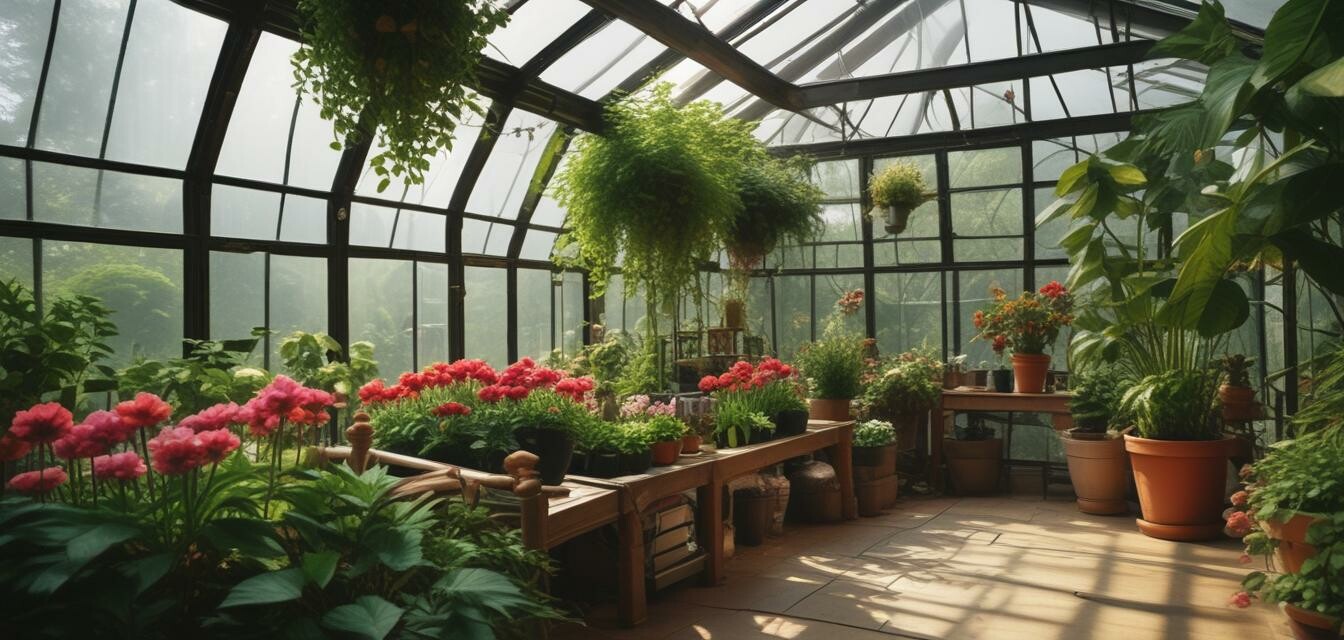
Managing Humidity for Flowering Indoor Plants
Key Takeaways
- Optimal humidity levels enhance the growth and blooms of flowering indoor plants.
- Different species have varying humidity requirements.
- Effective methods include using humidifiers, pebble trays, and grouping plants.
- Regular monitoring can prevent issues related to dry air, such as wilting or browning leaves.
- Implementing these tips can lead to a thriving indoor garden.
Creating and maintaining the right humidity levels is crucial for the health of your flowering indoor plants. High humidity can encourage vibrant blooms, while low humidity can lead to stress and poor growth.
Understanding Humidity Levels
Most flowering indoor plants thrive in humidity levels between 40% and 60%. Here’s a brief look at how humidity affects different aspects of plant health:
| Humidity Level | Effect on Plants |
|---|---|
| Low (< 40%) | Causes wilting, dryness, and leaf drop. |
| Optimal (40% - 60%) | Promotes healthy growth and vibrant blooms. |
| High (> 60%) | May lead to mold, pests, and root rot. |
Methods to Maintain Humidity
Here are some effective methods for managing humidity levels around your flowering indoor plants:
- Use Humidifiers: Place a humidifier in the room where your plants are. This is one of the most effective ways to ensure a consistent humidity level.
- Pebble Trays: Fill a shallow tray with pebbles and water. Place your pots on top of the pebbles to create a localized humid environment.
- Group Plants: Keeping plants close together creates a humidity pocket as they release moisture through transpiration.
- Misting: Lightly misting your plants can provide a temporary boost in humidity, especially in dry conditions.
- Bathroom or Kitchen Placement: Consider placing humid-loving plants in naturally moist areas of your home, such as bathrooms or kitchens.
Choosing the Right Plants
When considering flowering indoor plants, it's essential to choose species that thrive in similar humidity conditions. Here are some popular flowering indoor plants known for their humidity preferences:
| Plant Type | Ideal Humidity Level | Care Tips |
|---|---|---|
| Orchids | 50% - 70% | Water thoroughly and let them dry out slightly between waterings. |
| African Violets | 40% - 60% | Keep soil consistently moist but not soggy. |
| Bromeliads | 50% - 60% | Water in the central cup and provide bright, indirect light. |
| Peace Lilies | 40% - 60% | Keep consistently moist but avoid overwatering. |
| Gardenias | 50% - 70% | Maintain moisture and provide bright light. |
Pest Management in Humid Conditions
While humidity can benefit your flowering plants, it can also attract pests. Here are some tips to manage common pests that thrive in humid environments:
- Regular Inspection: Check leaves and soil regularly for signs of pests.
- Use Neem Oil: This organic option can help deter pests without harming your plants.
- Maintain Airflow: Ensure good airflow around your plants to avoid damp conditions that encourage pests.
Monitoring Humidity Levels
Investing in a hygrometer can help you keep track of the humidity levels in your home. Ideally, you should:
- Check humidity levels regularly, especially during seasonal changes.
- Adjust your humidity management methods based on the readings.
- Take note of plant responses to humidity changes to optimize growing conditions.
Conclusion
Managing humidity for your flowering indoor plants is essential for ensuring they thrive and produce beautiful blooms. By understanding the humidity requirements of different species and utilizing effective methods to maintain optimal humidity, you can create a flourishing indoor garden. For more insights on caring for indoor plants, visit our Care Tips section!
Pros
- Encourages vibrant blooms and healthy foliage.
- Helps prevent common indoor plant issues.
- Improved air quality in your living space.
Cons
- Excessive humidity can attract pests.
- Requires attention and regular maintenance.

